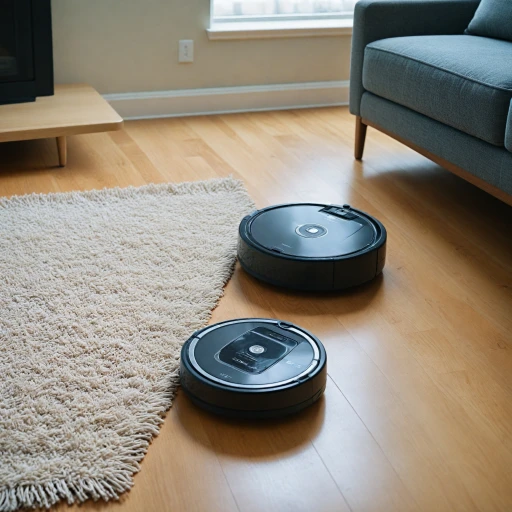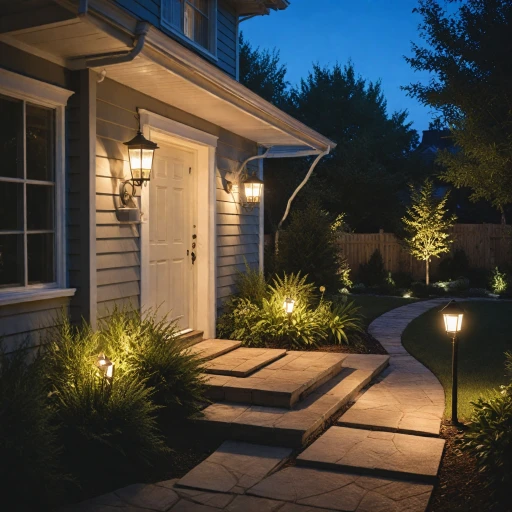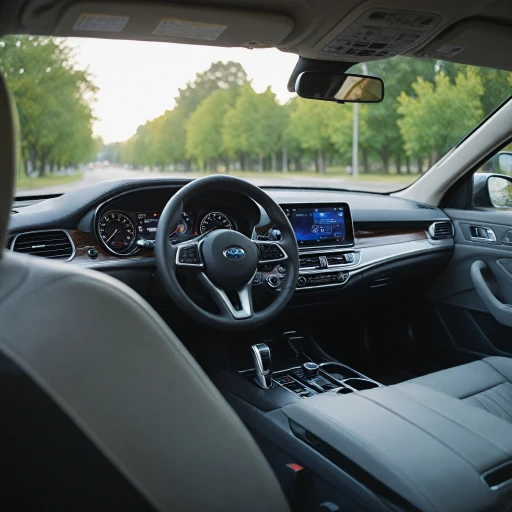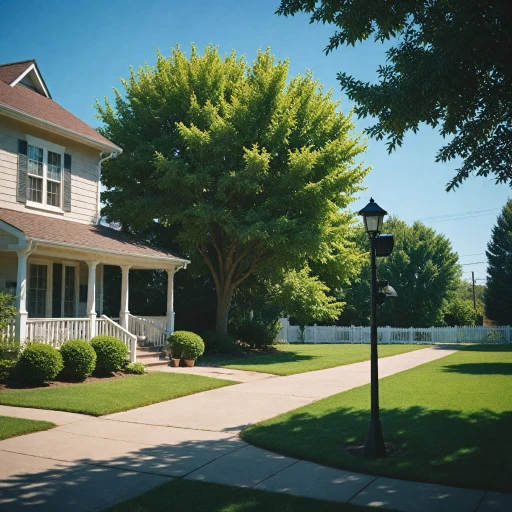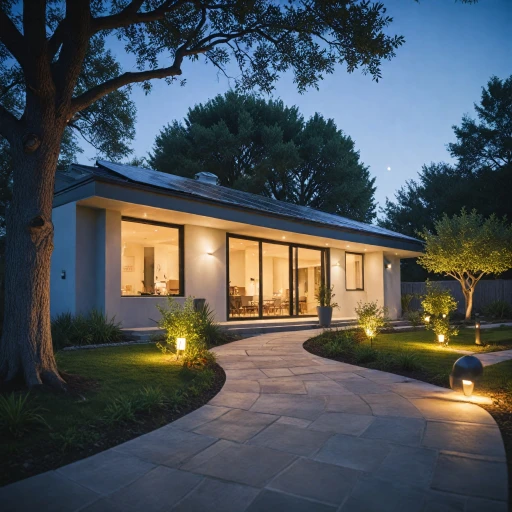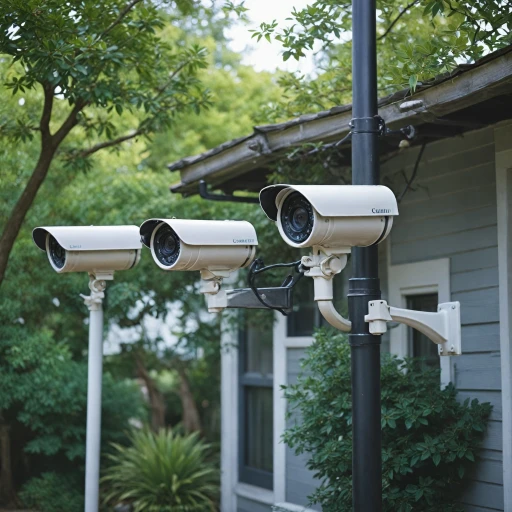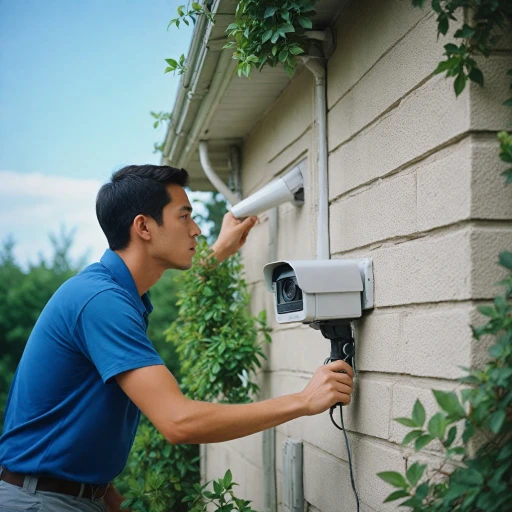
Understanding Battery-Powered Outdoor Motion Detector Lights
Grasping the Concept of Battery-Operated Motion Detector Lights
Battery-powered outdoor motion detector lights are a potent solution for home security enthusiasts. Their motion sensor technology activates the lights when movement is detected, offering a formidable deterrent against potential intruders. Unlike wired options, these battery-operated devices boast ease of installation and flexibility in placement.
Many of these security lights incorporate advanced LED technology, delivering bright illumination that enhances visibility. Models such as flood lights and spotlight variations provide wide coverage, ensuring no corner remains in the dark. Given their design catered for outdoor environments, waterproof features are essential, ensuring operation under different weather conditions.
The market offers various options, from solar-powered versions to those relying on simple battery power. Products available on Amazon often vary in price, influenced by features such as a motion-activated mechanism or a security-enhancing floodlight capability. The versatility of these lights allows them to be seamlessly integrated into existing home security systems.
For those considering a switch to more autonomous security features, exploring battery-powered home security cameras may provide further insights into creating a comprehensive security setup. Dive into exploring the benefits of battery-powered home security cameras for an in-depth understanding.
Key Features to Look for in Motion Detector Lights
Essential Features to Focus On
When considering the addition of motion detector lights to your home security setup, it's crucial to prioritize certain features to ensure you acquire a reliable and efficient product. Here are some key aspects to keep in mind:
- Power Source: Battery operated options offer flexibility in placement due to their cordless design. However, ensure the battery life meets your needs. For more on choosing the right batteries, consider exploring expert guidelines.
- Sensor Range and Sensitivity: Look for motion sensor lights that provide a wide detection range and adjustable sensitivity. This ensures maximum security coverage and reduces false alarms from small animals or passing vehicles.
- Light Output: LED security lights are advisable for their efficiency and long lifespan. Assess the lumens measure to determine brightness, especially if you need a flood light or spotlight to cover significant areas.
- Weather Resistance: Given their outdoor application, check for waterproof ratings to ensure durability under various weather conditions, thus avoiding complications related to supply chain issues for replacements.
- Programmable Features: Increasingly, products come with programmable settings for the lights' duration and sensitivity. Some even have solar powered capabilities for added sustainability.
- Aesthetics and Installation: Whether opting for traditional white or a color that blends with the environment, select styles that align with your home’s exterior architecture. Battery powered lights generally entail simple installation procedures.
- Price and Availability: Compare options available on various platforms like Amazon, considering sale price options to find a pack that meets your budget without compromising on features.
Installation Tips for Optimal Performance
Achieving Optimal Performance with Proper Installation
Installing battery-powered motion detector lights can be a straightforward process, yet it's crucial to follow specific guidelines to ensure you get the best out of your product. Here's a comprehensive approach to installing these lights effectively. Selecting the Right Location- Positioning is key for maximizing motion sensor effectiveness. Install lights approximately six to 10 feet above the ground to cover a wide area.
- Consider placing lights near entry points such as doors or windows, where intruders might attempt entry.
- Avoid placing lights in areas where trees, shrubs, or other obstacles might block the sensor.
- Caters to broad area coverage by adjusting the sensor angle appropriately. Some products, like LED flood lights, provide adjustable heads to tweak the direction and improve range detection.
- Ensure the solar panel, if equipped, faces direct sunlight for efficient energy charging.
- Utilize sturdy mounting hardware provided with the product. For instance, many lights on the market include screws or anchors to help secure them to walls or fences.
- Make sure that every component, especially solar lights, is mounted securely to avoid being disturbed by strong wind or adverse weather.
- After initial setup, walk through the detection zone to test the sensor lights' sensitivity and coverage. Adjust settings as needed.
Comparing Battery-Powered vs. Wired Options
Battery vs. Wired Motion Sensor Options
When choosing between battery-powered and wired outdoor motion detector lights, there are several important considerations. Understanding the differences can help you make an informed decision that meets your security needs and personal preferences.
Ease of Installation: Battery-powered options are often simpler to install, as they require no complicated wiring. They're ideal for homeowners who prioritize convenience and flexibility. Wired lights may need professional installation if you’re not experienced with electrical setups.
Reliability: Wired lights typically offer consistent power without the need to change batteries, making them a reliable choice for long-term use. On the other hand, battery-operated units are useful in areas without access to electrical outlets, but you'll need to monitor the battery levels to ensure uninterrupted operation.
Performance in Harsh Weather: Both types can be designed to withstand outdoor conditions and may come with waterproof features. Check product reviews, often found on platforms like Amazon, to assess how well each option performs in severe weather, whether you choose solar, flood, or spotlight types.
Energy Efficiency: Some LED motion sensor lights, whether battery-powered or wired, include energy-saving features. Solar-powered options tap into renewable energy sources, reducing electricity costs and environmental impact.
Price Considerations: Battery-powered lights may come with a lower initial sale price compared to wired models, especially if you factor in professional installation costs. However, consider the cost of replacing batteries or investing in rechargeable battery options as part of your supply chain strategy.
Ultimately, your choice between battery-powered and wired motion detector lights will depend on your specific security requirements, power availability, and budgetary considerations. Making an informed decision ensures that your outdoor spaces are well-lit and secure, regardless of the type of light you choose.
Maintenance and Troubleshooting
Regular Maintenance and Addressing Common Issues
Proper maintenance ensures that battery-powered outdoor motion detectors function optimally. Over time, dirt and debris can accumulate on the sensor, affecting its sensitivity. Cleaning these units regularly will help maintain their performance. Using mild soap and water, gently wipe down the sensor and the surface of the lights with a soft cloth. Ensure everything is thoroughly dry before reassembling. A common issue with these sensors is battery depletion, especially in older or low-quality products. Regularly check the battery levels and replace them as necessary. High-quality, rechargeable batteries can help save money in the long run and are more environmentally friendly. Another potential issue could be with their waterproof capability. Invest in models with an IP rating of at least 65 to ensure resistance against rain and dust. In case of persistent moisture issues, inspect the mounting area for possible leaks and reseal any gaps to prevent water ingress. If the lights fail to operate during motion detection, confirm that the sensors aren't obstructed or misaligned. Also, check the settings to ensure motion activation is enabled. In some models, a soft reset can help recalibrate the sensor. Security lights with LED technology are known for their durability and energy efficiency, reducing the frequency of maintenance. For those considering solar lights, keep solar panels clean and free of shade to maintain charging efficiency. It’s essential to periodically review and adjust the motion sensitivity settings as foliage or objects in the sensor’s field may trigger unwanted activations. Experimenting with different settings may optimize performance for different seasons or changes in the environment. By incorporating these maintenance practices, you can ensure the longevity and reliability of your outdoor motion-activated lights, providing consistent home security.Integrating Motion Detector Lights with Home Security Systems
Seamlessly Enhancing Your Home Security System
Integrating motion detector lights with your existing home security system can elevate your property's safety to new heights. When connected, these systems work harmoniously to keep your premises secure while providing added convenience and peace of mind. Consider the following points when looking to integrate your motion-activated security lights with your home network:- Compatibility: Ensure your security light system is compatible with your current home security setup. Many battery-powered motion sensors are designed to sync with popular systems available on amazon and other retailers.
- Smart Home Integration: Opt for products that work with smart home platforms. This includes integration with popular virtual assistants, enabling you to control your outdoor lights using voice commands.
- Wireless Connectivity: Battery-powered and solar-powered options can easily connect to your home Wi-Fi. This allows for remote monitoring and control from your smartphone or tablet, giving you real-time updates and alerts.
- Interconnected Systems: Choose sensor lights that trigger other security features like cameras or alarms. When motion is detected, these interconnected systems can activate flood lights or spotlight features to deter intruders.


